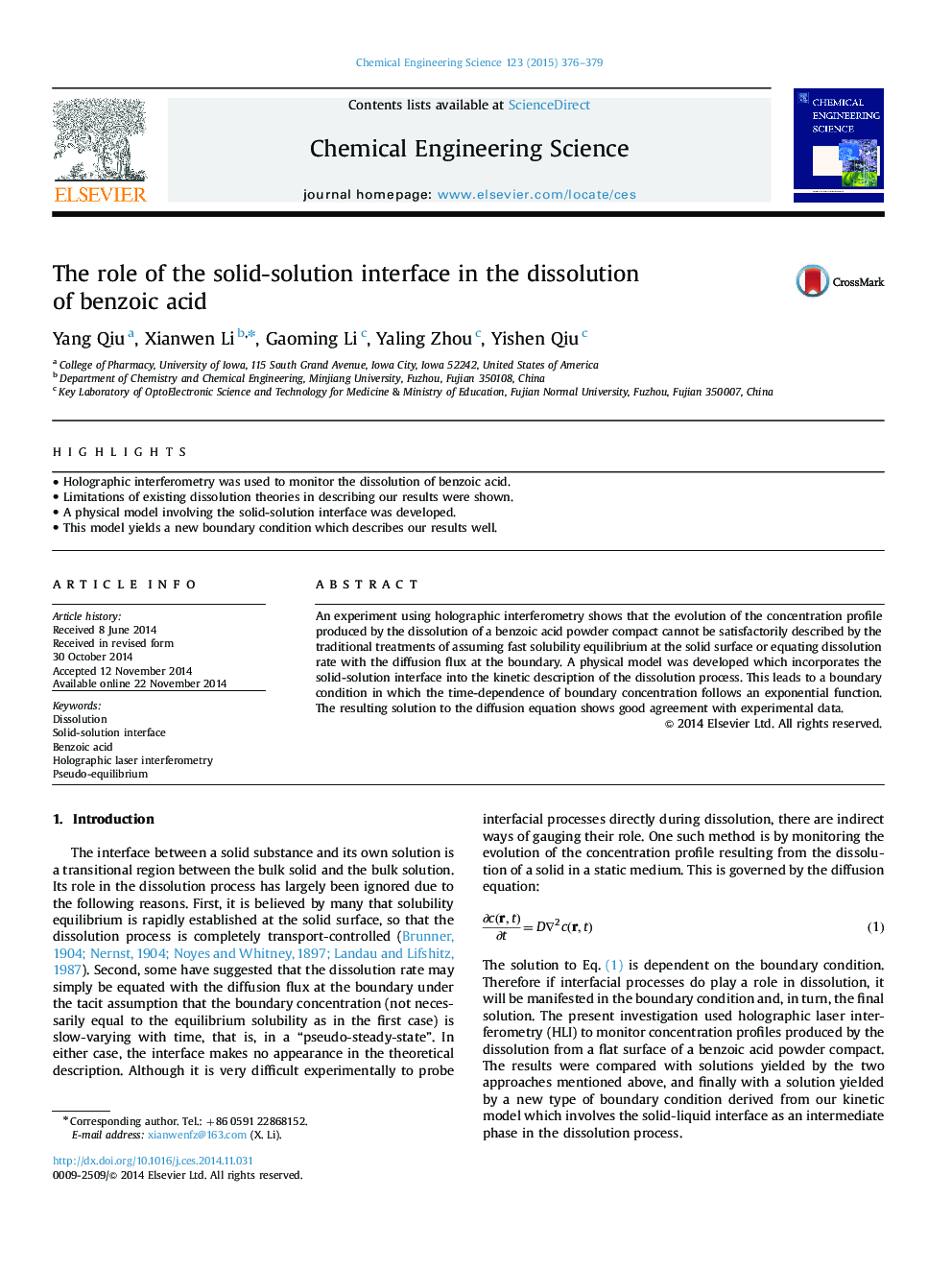| Article ID | Journal | Published Year | Pages | File Type |
|---|---|---|---|---|
| 6590560 | Chemical Engineering Science | 2015 | 4 Pages |
Abstract
An experiment using holographic interferometry shows that the evolution of the concentration profile produced by the dissolution of a benzoic acid powder compact cannot be satisfactorily described by the traditional treatments of assuming fast solubility equilibrium at the solid surface or equating dissolution rate with the diffusion flux at the boundary. A physical model was developed which incorporates the solid-solution interface into the kinetic description of the dissolution process. This leads to a boundary condition in which the time-dependence of boundary concentration follows an exponential function. The resulting solution to the diffusion equation shows good agreement with experimental data.
Related Topics
Physical Sciences and Engineering
Chemical Engineering
Chemical Engineering (General)
Authors
Yang Qiu, Xianwen Li, Gaoming Li, Yaling Zhou, Yishen Qiu,
